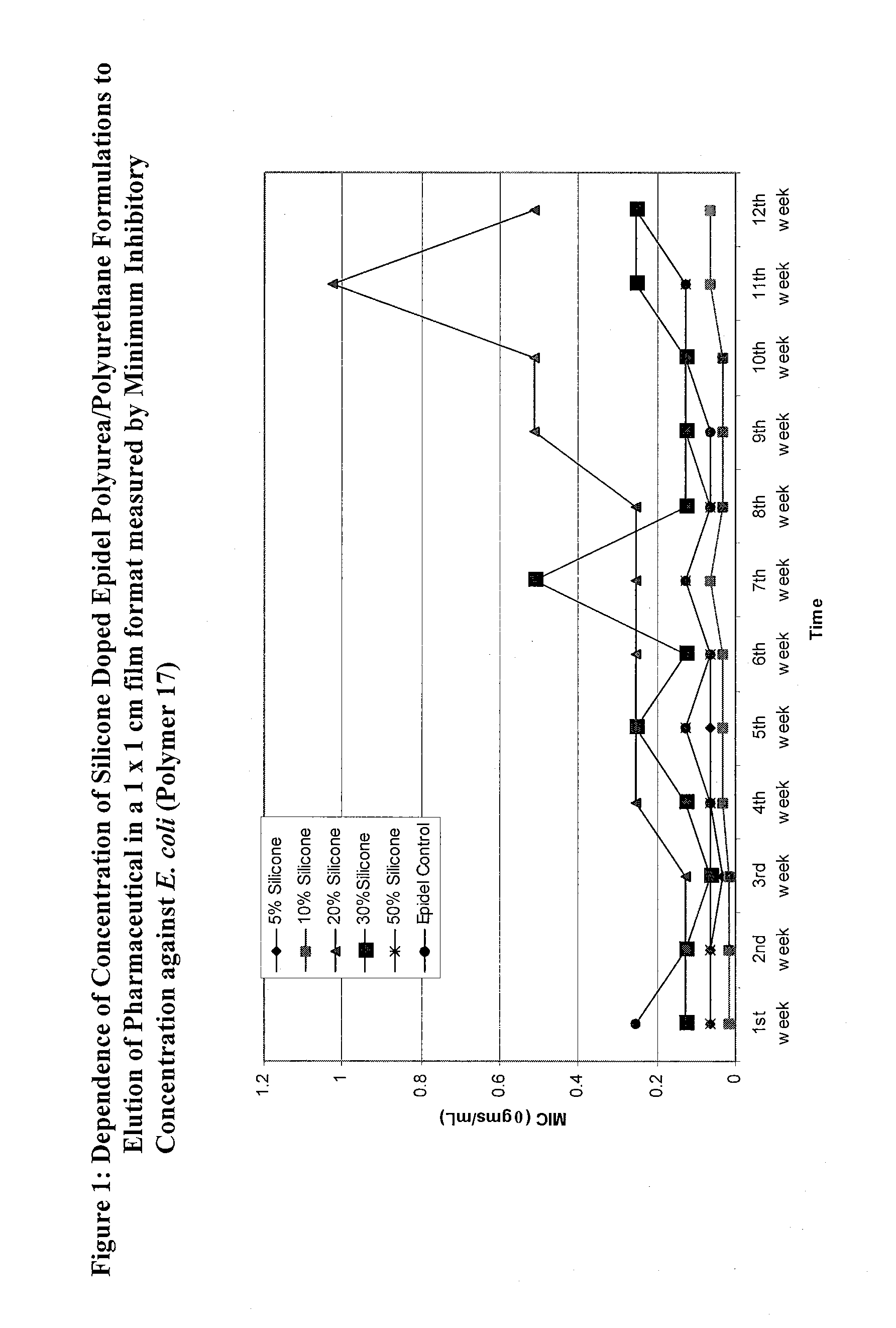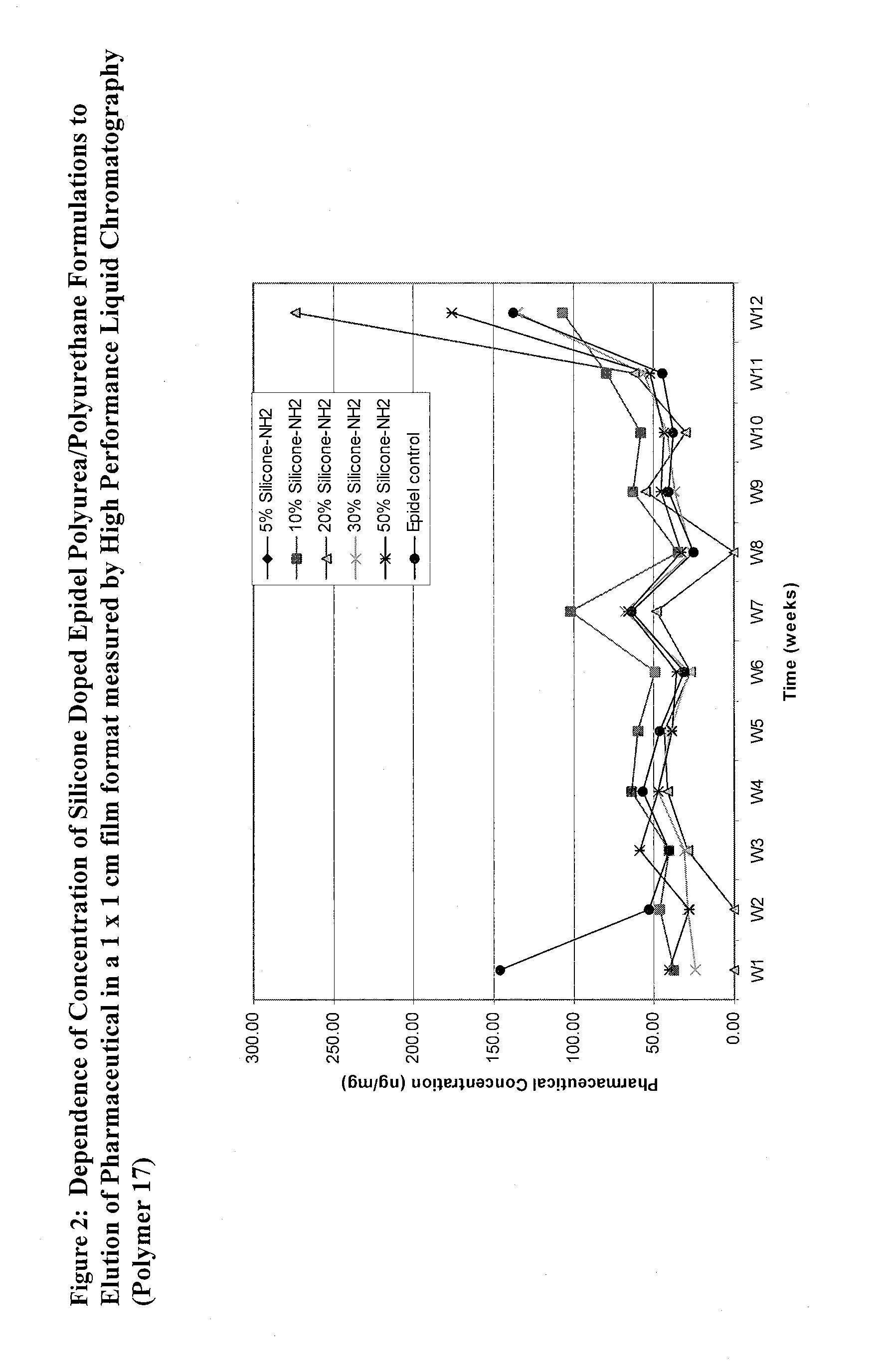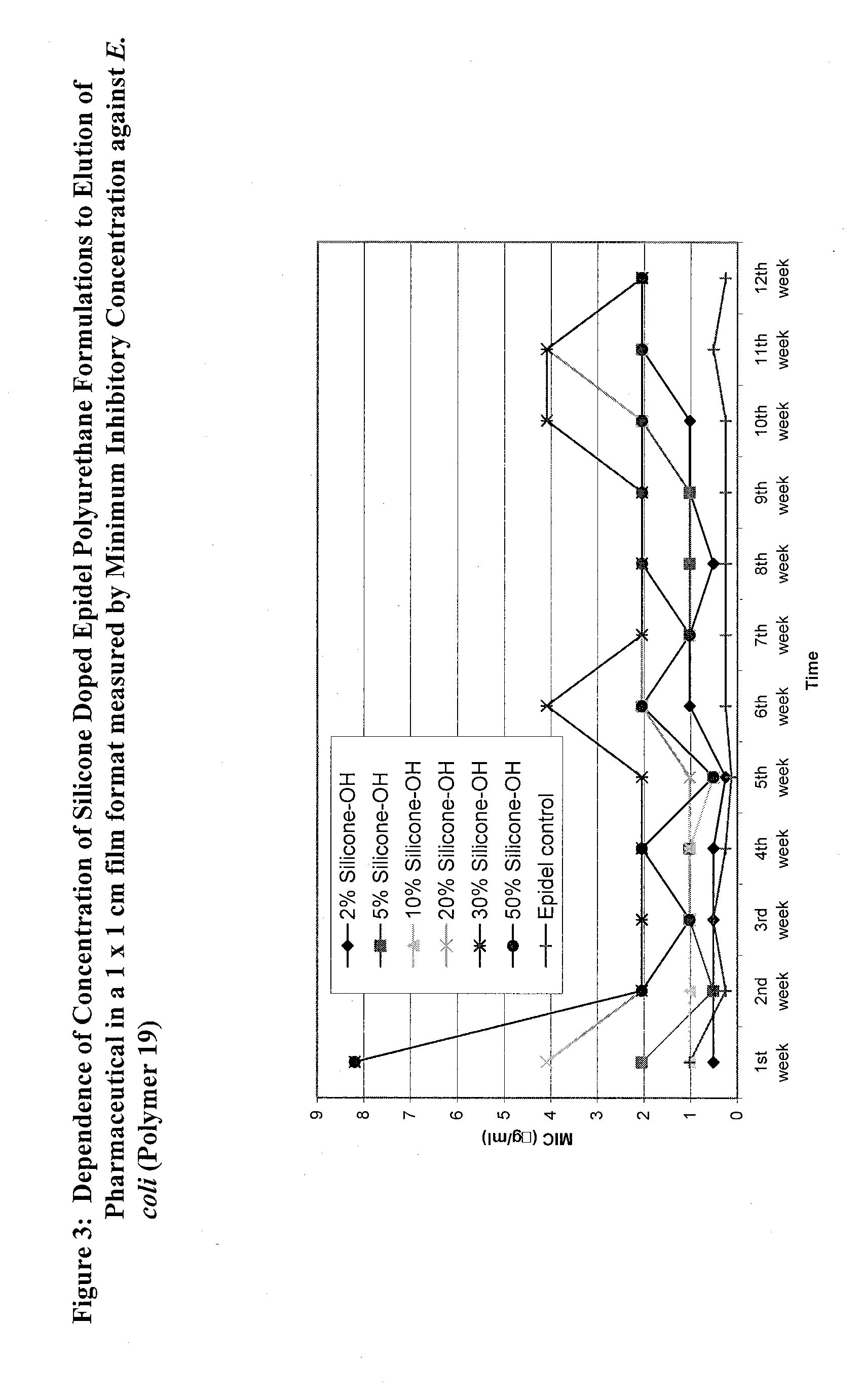Covalently grafted pharmaceutically active polymers
- Summary
- Abstract
- Description
- Claims
- Application Information
AI Technical Summary
Benefits of technology
Problems solved by technology
Method used
Image
Examples
example 1
Synthesis of Polysilicones Including an Activated Silicon Grafting Moiety with Amine End Groups
[0200]Polysilicones including activated silicon centers and amine end groups were used in the synthesis of graftable, pharmaceutically active polymers. A polysilicone including an activated silicon center as a grafting moiety was prepared according to Scheme 2. A polysilicone (Compound (8)) was treated with an amine-containing silicon reagent such as compound (9) to yield a polysilicone that has amine end groups (compound (2)). In this procedure, compound (8) was stripped of water by heating to 100° C. under vacuum (2-5 mm Hg) for 1 hour. The temperature was then reduced to 75° C. and aminopropyltrialkoxysilane (compound 9) was then added. The system remained under vacuum for 4 hours to remove the ethanol formed from the condensation process. A clear colorless fluid was then obtained. 1H NMR (400 MHz, CDCl3). δ: 3.75 (q, OCH2CH3), 2.64 (t, CH2CH2CH2), 1.19 (t, OCH2CH3, 0.00 (s, Si(CH3).
example 2
Synthesis of Polysilicones Including an Activated Silicon Grafting Moiety with Hydroxy End Groups
[0201]Polysilicones including activated silicon centers and hydroxy end groups may be used in the synthesis of graftable, pharmaceutically active polymers. A polysilicone including an activated silicon center as a grafting moiety may be prepared according to Scheme 3. A polysilicone (Compound (8)) may be treated with a hydroxy-containing silicon reagent such as compound (10) to yield an activated polysilicone that has hydroxy end groups (compound (4)).
example 3
Synthesis of Polysilicones Including a Hydridosilane Grafting Moiety with Amine End Groups
[0202]Monomers including hydridosilanes are suitable for the synthesis of graftable, pharmaceutically active polymers and can be prepared according to Scheme 4. A silane reagent such as compound (11) can be used in a Pt-catalyzed hydrosilylation of an olefinic substrate such as an N-protected allylamine (compound (12)). The resulting product (compound (13)) may then be treated with a reducing agent such as LiAlH4 followed by N-deprotection to afford the desired hydridosilane product (compound (5)).
PUM
| Property | Measurement | Unit |
|---|---|---|
| Temperature | aaaaa | aaaaa |
| Temperature | aaaaa | aaaaa |
| Temperature | aaaaa | aaaaa |
Abstract
Description
Claims
Application Information
 Login to View More
Login to View More - R&D
- Intellectual Property
- Life Sciences
- Materials
- Tech Scout
- Unparalleled Data Quality
- Higher Quality Content
- 60% Fewer Hallucinations
Browse by: Latest US Patents, China's latest patents, Technical Efficacy Thesaurus, Application Domain, Technology Topic, Popular Technical Reports.
© 2025 PatSnap. All rights reserved.Legal|Privacy policy|Modern Slavery Act Transparency Statement|Sitemap|About US| Contact US: help@patsnap.com



